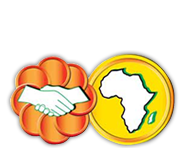Blaise Ahouantchede on e-payment systems in Africa: Issues and Challenges
I. Low banking services in Africa: a constraint on financial services development
The banking rate in Africa is still low, making it hard to overcome the challenge of developing financial services necessary to strengthen African economies. In the eight West African Economic and Monetary Union (WAEMU) states which have eighty-four million people and some one hundred banks, this rate - which is less than 10% - does not allow for the establishment of a solid and sustainable development strategy for a mass financial system.
Several initiatives are however underway to reverse this trend. These include adapting regulations, sensitizing various actors, educating the population on the financial culture, providing adapted and accessible services at reduced costs, and ensuring the security of financial transactions to instill confidence in clients.
II. The role of actors and strategy type
Central banks have an important role to play in improving the banking and financial landscape by adopting proper regulations designed to foster the development of banking and financial activities in Africa. As a result, in the WAEMU zone, the Central Bank of West African States (BCEAO), through Order No. 08/2002/CM/UEMOA, promotes access to banking services and the use of electronic payment systems. Following this directive, WAEMU member states were also expected to adopt similar laws in line with the directive.
These measures are necessary to sensitize various segments of the society on the use of scripted means of payment, including e-payment which is playing a prominent role.
“GIM-UEMOA”, the e-payment governance and supervisory body within WAEMU, has established an interbank e-payment system in the region by providing world-class technical and operational infrastructure, making it possible to meet cash withdrawal and payment needs through bank cards.
Strategic partnerships have also been established with international issuers to enable GIM-UEMOA member banks to offer valuable services both within and outside the WAEMU zone while respecting BCEAO regulations for operations conducted within WAEMU, in particular, balancing and settling electronic financial transactions conducted in local currency. The establishment of a unified zone regarding the processing and management of interbank operations, a sign of real financial integration, is therefore one of the major achievements in the WAEMU zone.
Banks also promote the development of financial services through an innovative and differentiated approach based on their marketing and sales strategies.
III. E-payment’s contribution to the expansion of banking services and the promotion of financial inclusion
Electronic banking is and will remain an essential element in efforts to expand banking services to the population given that it targets people with or without payment means. The major challenge facing banks is therefore to establish and provide competitive electronic payment systems to the continent’s increasingly demanding population. This will imply controlling investments and operation costs which are relatively high.
The creation of the “GIM-UEMOA” in the WAEMU zone therefore meets a key objective of pooling investments by adopting a sub-regional interoperability strategy for e-payment operations enabling banks to provide local services at reduced costs.
The establishment of these regional champions such as the GIM-UEMOA in West Africa, OMAC in Central Africa, and a soon to be active inter-banking system for ECOWAS, and the need for an interconnection of these systems, should one day enable Africans with payment instruments such as credit cards or other electronic payment facilities to easily conduct financial transactions anywhere in Africa, without thinking about foreign exchange issues.
Africa will therefore become a unified zone, facilitating trade and strongly fostering financial and economic integration.
IV. Future challenges
New Information and Communications Technologies are enabling major players such as banks to provide high value-adding banking and financial services to their clients, based on payment methods such as bank cards, the Internet and mobile phones.
With a fairly high penetration rate of about 50% in Africa, mobile phones will, within the next years, undoubtedly become a payment method that will revolutionize the continent’s financial and banking landscape. The bank will be electronically connected and it will be close to its clients. This will also enable banks to innovate and earn new commissions from financial services, thereby increasing their net banking revenue. This is a great challenge for all stakeholders such as central banks, regional champions such as GIM-UEMOA, Banks, financial institutions, microfinance institutions, etc.
Blaise Ahouantchede, GIM-UEMOA’s Director General since 2003, has more than fifteen years of experience in finance, banking and project management. A polytechnic engineer and a holder of an MBA from Paris Dauphine, he also has two graduate degrees in information systems and in business and project management from Paris XII, France.
Before becoming the director-general of GIM-UEMOA, he was, for more than eight years, a banking and finance project manager with ‘Crédit Agricole du Sud et au Crédit Agricole Indosuez’ in France, where he was in-charge of retail services and back-office operations, financial products research, as well as mergers and acquisitions operations. He was also project director at the deposits and consignment office in France responsible for bank projects and payment methods.
source: mfw4a.org

